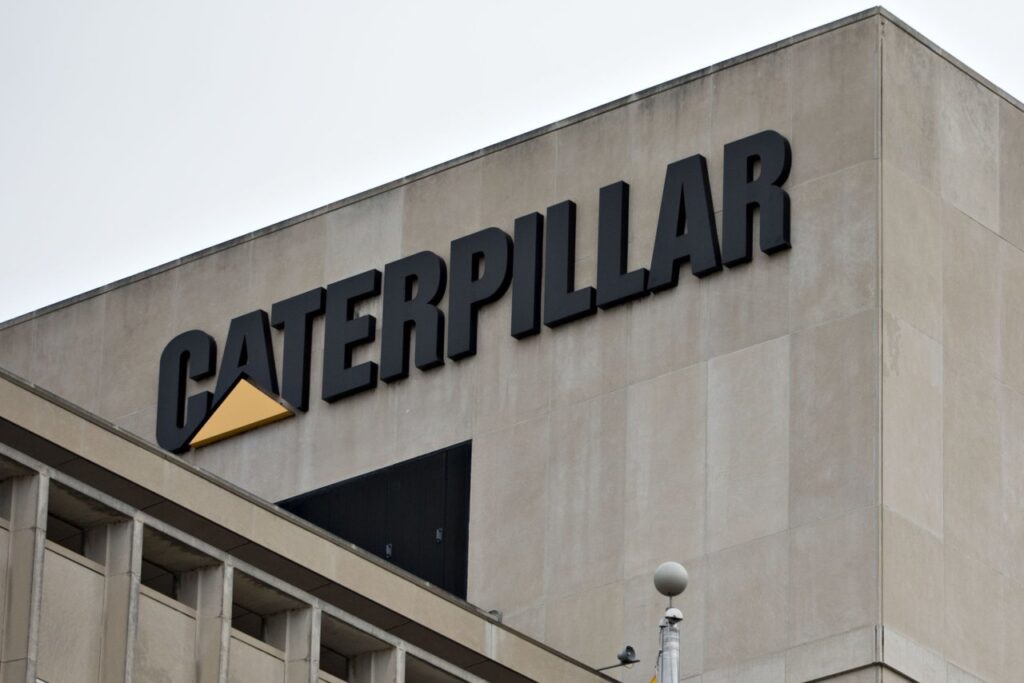Context
Caterpillar is one of the world’s remanufacturing leaders, a strategy that focuses on extending a product’s lifetime to its maximum capacity and, consequently, use its resources in a more effective way. Caterpillar’s remanufacturing is an exchange model, which means that when a component needs to be replaced, consumers work with their authorized ‘Cat Dealer’ to exchange their non-functional item and replace it with a remanufactured one. The ‘old’ product is then sent back to Caterpillar for remanufacturing. The remanufactured product typically costs less than half of a new one but has the same performance.

This represents an economic benefit to the consumer, since a remanufactured item is priced lower than a new one, and decreases the use of raw materials, through additive manufacturing techniques and reuse. A remanufactured product is not the same as a recycled or repaired product, since the complete component undergoes a process that replaces worn or unsalvageable parts with new parts and remanufactures others so that the component meets the original manufacturers’ specifications. When a product is remanufactured, the parts that need replacement are submitted to an industrial process that returns the components to same-as-new conditions, or they are replaced with new parts.
Design is an important aspect of the remanufacturing business model since products need to be durable, so that
they can withstand as many lifecycles as possible – according to Caterpillar, some products can be repaired and
remanufactured for multiple lifecycles.
History
Over 45 years ago, Caterpillar was approached by a large customer of engines for on-highway trucks that needed
a repair option that was more time and cost effective than replacing their diesel engines with new ones. In the search for a solution to solve a customer request, Caterpillar saw an opportunity for business in remanufacturing, which was not widely known around the world and could be profitable for the company because it was innovative and attractive to consumers in financial and practical ways
The company then started looking for alternative engine overhauls that could turn the usual long repair method –
taking days to be completed – to a process that shortened the time and complexity for servicing these engines.
Barriers
Once the new business model was implemented in Caterpillar’s first plant, they expanded this kind of work around the globe as companies started requesting it. Developed countries were the first ones to demand it and had a positive acceptance of remanufactured goods. Some developing countries have been more resistant. According to
Caterpillar, there are concerns to not be a “dumping ground for the developed world’s used goods”, which is also connected to a misconception of perceiving remanufactured products as old used products.
This reasoning is not unjustified. In some countries that used to receive parts from other countries’ end-of-life products, for example, both society and government are now opposing this. Caterpillar is trying to reverse this image and encourages the notion that the remanufacturing process is very different to discarding used, old or broken products in other countries.
Despite these challenges in developing countries, Caterpillar invested in a new unit in Brazil, choosing the city of Piracicaba, in the State of São Paulo, to build its first remanufacturing plant in South America. With this investment,
Caterpillar is looking to show Latin American consumers and policymakers that remanufactured products are similar
to new ones, but with less associated environmental and monetary costs. Just to illustrate this, Caterpillar highlights
that the remanufacturing resulted in 134 million lbs of material remanufactured or recycled per year, the preservation
of 85% of original energy “value add” and approaching the “zero landfill” status1
.
Having a regulation assisting the implementation of a new business model is a decisive factor for its approval in
a country. Each country has its own legislation, and in the United States, for example, there are almost no barriers
for the exchange market in NAFTA (North American Free Trade Agreement) regulations, which can help explain why
remanufacturing is more popular in the country, both for government and consumers.
This happens in many developed countries, where legislation on the matter is usually new or has been recently
updated to recognize remanufactured products. On the other side, many developing countries still have legislation,
mostly from the 1960s, in force that only recognizes new and used products.
Caterpillar is also focusing on legislation that clarifies the value of remanufacturing and the remanufacturing market.
The company is working with policymakers to develop and implement regulations that make the commercialization
of remanufactured goods possible and accepted in those places.
Also Read: Influencer Marketing by Mercedes Benz
Partnerships
Caterpillar sells its products through 180 independent dealers around the world. The company also works with the
Remanufacturing Industries Council, an organization that communicates the benefits of remanufactured products in order to educate different stakeholders such as schools, academia, policy makers and consumers on this subject. Other essential partnerships have been formed with organizations such as the Ministry of Industry and Information Technology (MIIT) of China and the Rochester Institute of Technology in New York that analyses Caterpillar’s reports in order to communicate the good results of the company’s work so that consumers can better understand the matter of this business.
Communication and results
Caterpillar’s business model of remanufacturing highlights the benefits to consumers and businesses, demonstrating how both can get positive results through remanufacturing and also how the remanufacturing process can provide solutions that contribute to more sustainable production and consumption models.
On their website, Caterpillar explains – through videos, infographics and statements – how the remanufacturing exchange model works and its relation with the circular economy, emphasizing the environmental benefits of this business model and the positive results achieved through product lifetime extension.
Some of the benefits include a financial gain for consumers, such as clients and suppliers, due to lower operation costs for providing same-as-new performance, and more repair options. It also helps businesses reduce owning and operating costs.

